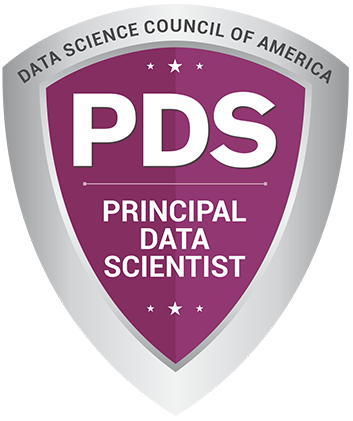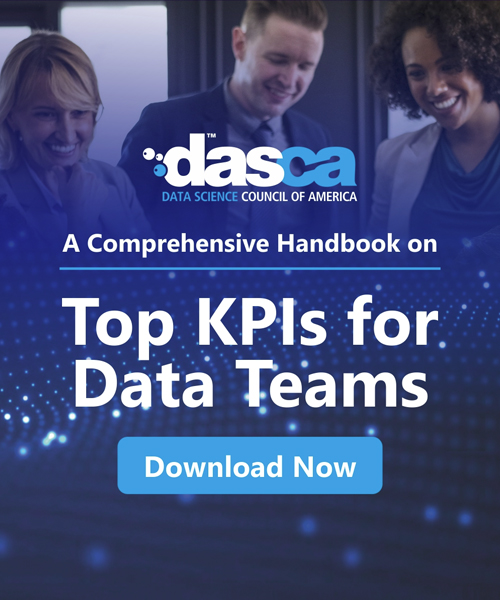
Businesses today are presented with a growing volume and variety of data. This data, if harnessed effectively, has the potential to enhance efficiency, improve customer experiences, and boost the bottom line. However, traditional approaches involving complex tools and coding skills can be prohibitive for many business users.
Understanding Augmented Analytics
Augmented analytics, is a rising paradigm that leverages the power of artificial intelligence and machine learning. It simplifies data analysis, making it more accessible and efficient for both data professionals and non-experts, transforming decision-making processes for businesses of all sizes and industries. Imagine a scenario where an e-commerce business notices a high cart abandonment rate when customers reach the point of viewing shipping fees. Augmented analytics tools can swiftly identify this trend. As a response, the business offers free shipping when customers exceed a certain spending threshold, resulting in reduced cart abandonment and increased sales.
The Mechanism of Augmented Analytics
Augmented analytics operates on the cutting edge of technology, bringing together machine learning, natural language processing, data visualization, and artificial intelligence to deliver a comprehensive solution.
- Machine learning is the workhorse, diving deep into data to unearth patterns and provide valuable foresight, truly separating the wheat from the chaff.
- Natural language processing adds the human touch, extracting meaningful information from diverse sources, such as customer feedback, allowing businesses to read between the lines and identify evolving sentiment trends.
- Data visualization tools then step in, creating user-friendly dashboards that "lay it on the line," making complex data accessible and easily understandable for decision-makers.
While AI and ML are often used interchangeably, they're two sides of the same coin, with augmented analytics blending the best of both to revolutionize data analysis.
Upsides of Using Augmented Analytics
Embracing augmented analytics can offer several to organizations:
- Enlightening Informed, Data-Driven Decisions: Augmented analytics tools shed light on crucial data trends, guiding organizations to make more informed decisions. For instance, they can pinpoint a decline in customer engagement on a website, leading to initiatives like optimizing the user experience and content to re-engage visitors.
- Minimizing Human Errors: AI-driven data tools play a notable role in reducing the risk of human errors that might otherwise compromise the accuracy of insights. This ensures that the decisions made are based on reliable data.
- Fostering Collaborative Insights: By providing a common platform for data analysis, augmented analytics tools encourage collaboration among various teams within an organization. This shared environment fosters cross-functional insights and a more holistic approach to decision-making, further enhancing the organization's overall effectiveness.
- Time and Resource Savings: The incorporation of AI and machine learning tools streamlines the process of data retrieval, minimizing the reliance on data analysts for report compilation. This not only saves time but also enables quick access to data when it's needed most.
- Efficient Data Management: Augmented analytics solutions efficiently handle large volumes of data, all while ensuring compliance with data privacy regulations such as GDPR. This allows organizations to effectively manage data while staying within the boundaries of the law.
- Broadening Data Accessibility: Augmented analytics tools democratize data by making it accessible to a wider range of users. They eliminate the need for extensive data analysis skills, making it easier for non-technical staff to derive valuable insights. Simultaneously, these tools assist analysts and data scientists by automating data preparation, freeing up their time for other critical tasks.
Addressing Challenges Associated while Implementing Augmented Analytics
Despite the benefits, implementing augmented analytics comes with challenges, including:
Addressing Misconceptions
- Challenge: Educating employees about the purpose and benefits of AI and machine learning tools.
- Importance: Vital to dispel concerns that these technologies will replace human roles.
Balancing AI and Human Involvement
- Challenge: Finding the right balance between AI automation and human participation.
- Importance: Human involvement is crucial for providing context and critical thinking.
Data Quality
- Challenge: Ensuring data quality by cleaning and maintaining raw data.
- Importance: Poor-quality data can result in unreliable insights, whereas low-quality input yields inaccurate output.
Optimal Approaches to Embrace Augmented Analytics
When aiming for a successful implementation of augmented analytics, organizations need to consider these guidelines:
- Meticulous Tool Selection: Investigate the spectrum of available analytics tools and engage in a collaborative effort with relevant stakeholders to opt for a platform that harmonizes with your corporate objectives and encompasses the essential features.
- Gradual Achievement Display: Before extending your AI project enterprise-wide, exhibit the incremental achievements you've made. Tangible results carry significant weight in securing widespread support.
- Interdepartmental Collaboration: Forge partnerships across various teams to pinpoint areas where augmented analytics tools deliver the most substantial outcomes. Adjust AI algorithms as necessary to optimize benefits throughout the organization.
Conclusion
Machine learning enhances augmented analytics tools, making data generation and interpretation much simpler. These tools help process and analyze data, making decision-making faster and lightening the workload through automated analytics systems.


































